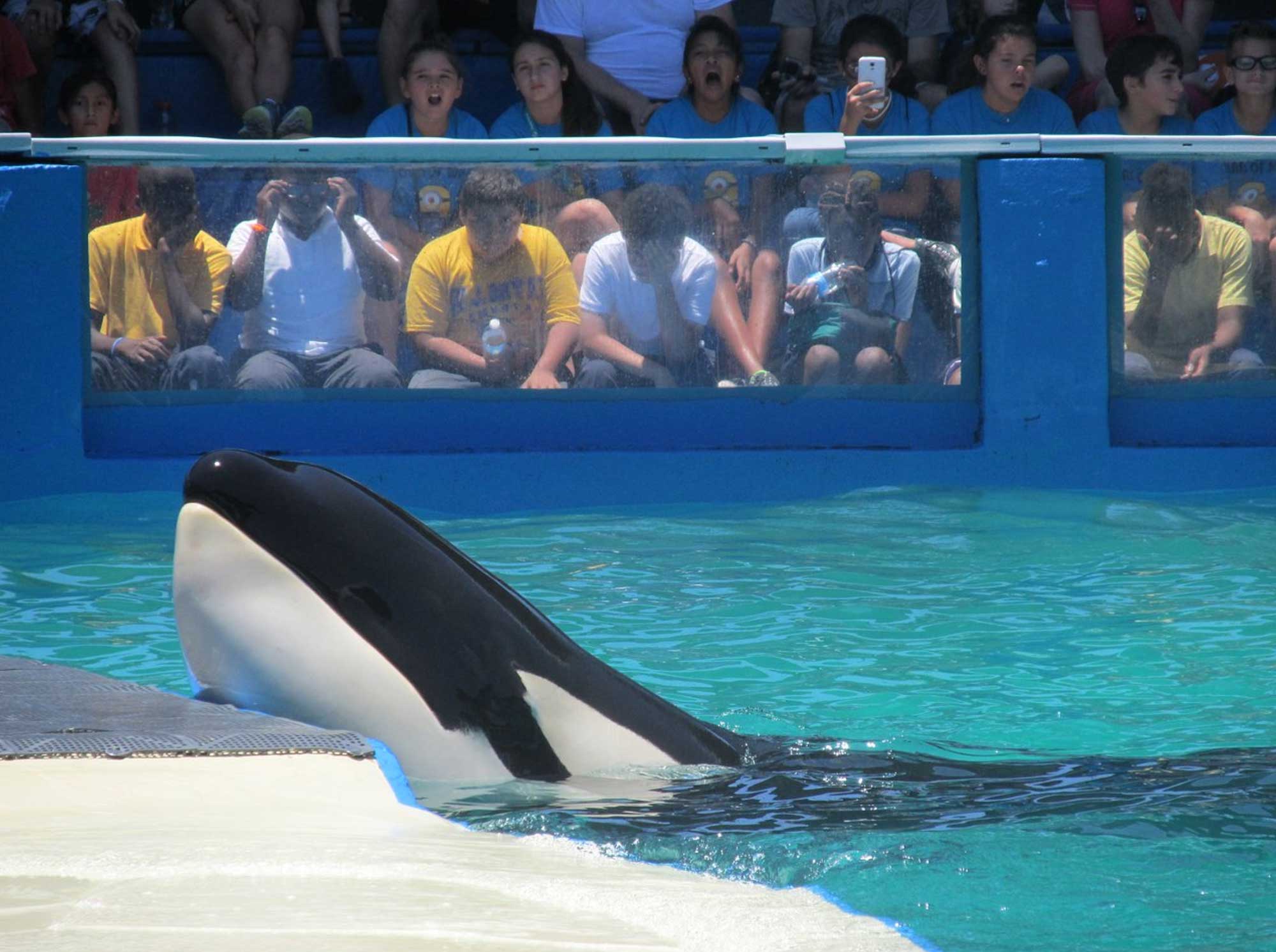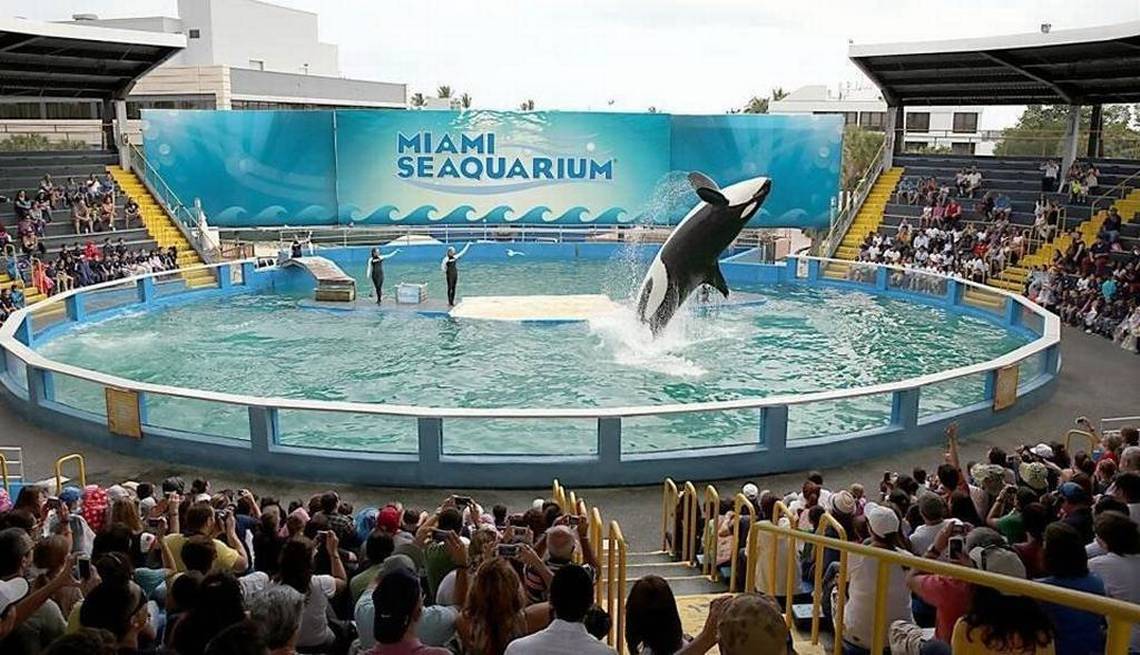August 17 – Oct 28 2021
On August 17, The Dolphin Company issued a press release announcing it had reached an agreement with Palace Entertainment to take over the operation of the Miami Seaquarium.
The company operates 32 parks across the world, including the Gulf World parks in Panama City Beach, Marineland in St. Augustine and Dolphin Connection in Duck Key, making the Miami Seaquarium the company’s fourth park in Florida, in the United States.
“BREAKING NEWS: Miami Seaquarium, the facility holding Lolita (Tokitae) the long-term captive orca, is being sold to Mexico’s The Dolphin Company (aka: The Dolphin Abusement Company) for an undisclosed amount. In addition to the dolphinariums they own in Mexico, The Dolphin Company also operates a few other captive dolphin facilities in Florida- GulfWorld, Marineland, and Dolphin Connection. The company has no plans to make major changes to the park and will continue to use Lolita as main attraction.” – Ric O’Barry
August 17, 2021 09:30 AM Eastern Daylight Time
CANCUN & QUINTANA ROO, Mexico
The Dolphin Company, the largest park operator in Latin America and the number one Swimming with the Dolphins company in the world, today announced it reached an agreement with Palace Entertainment to assume operation of Miami Seaquarium. This agreement is still subject to certain customary closing conditions related to licensing and lease assignment. In the meantime, the Seaquarium will continue to be operated by Palace Entertainment.
Miami Seaquarium opened its doors for the first time in 1955 in Florida’s beautiful Key Biscayne, becoming the world’s largest marine attraction at the time. Miami Seaquarium grew to become a center for wildlife conservation, committed to the rescue, rehabilitation and release of distressed marine animals. The park also offers educational programs on environmental protection and marine science, making learning fun for millions of visitors over its history. This agreement will ensure Miami Seaquarium will continue to provide world-class care for each and every one of the animals it houses and remain a premier destination in South Florida.
Eduardo Albor, Chief Executive Officer of The Dolphin Company said: “We are proud to announce the addition of Miami Seaquarium to our Dolphin Family, and are pleased to have the opportunity to bring our experience of more than 25 years with marine mammals to the most popular attraction in South Florida. We look forward to soon welcoming Miami Seaquarium’s employees, marine mammals and visitors to our family.’’
John Reilly, Chief Operating Officer of Palace Entertainment said: “The interest of The Dolphin Company for Miami Seaquarium, together with its commitment to environmental protection and the conservation of marine mammals, make it the perfect operator to manage this beautiful marine park. Our previous experiences with The Dolphin Company give us full confidence that they will expand their best practices to the Seaquarium and ensure all species, especially marine mammals, will receive the best of care and attention as they do in their habitats all over the world.”
Founded in 1994, The Dolphin Company offers unique experiences in the world with marine mammals, educating millions of people every year about the importance of these species and the care of the environment. With more than 30 parks and habitats in 8 countries and 3 continents, including the United States, Italy, Mexico and Argentina, The Dolphin Company operates under different brands, including Dolphin Discovery, Dolphin Cove, Zoomarine and Marineland.
The Dolphin Company and Palace Entertainment expect to close this transaction before the end of the year and transition the operation of Miami Seaquarium. Together with GulfWorld in Panama City Beach, Marineland in St. Augustine and Dolphin Connection in Duck Key, Miami Seaquarium will become the fourth operation of The Dolphin Company in Florida.
About The Dolphin Company
Founded in 1994, The Dolphin Company is the largest park operator in Latin America, and the world’s number one dolphin family. With 32 parks dolphin habitats in 8 countries and 3 continents, The Dolphin Company receives more than 2 million visitors annually offering them entertainment, while promoting environmental protection and marine wildlife conservation.
– BUSINESS WIRE

August 27, 2021
Column by Howard Garrett in response to The Jitney article
Re: Miami Seaquarium New Ownership Will Keep Lolita Locked Up
Sequarium management was asked to comment for this article, and as always they tried to discourage anyone from considering returning Lolita to her native habitat. Those tactics can and should be answered with science and facts, as follows.
Seaquarium “claimed that Lolita wouldn’t survive the journey back to her home in the Pacific Northwest. And if she did she would either die of disease or spread disease to other orcas.”
First, the disease issue was also raised when Keiko was headed back to Iceland. The solution was a team of 6 USDA-appointed veterinarians and pathologists to examine Keiko to be sure he carried no infectious diseases. He was declared healthy and was flown home to Iceland, where he became even healthier. Tokitae would get a similar examination prior to transport. Also, she wouldn’t “die of disease” because she has normal immunity even from novel pathogens, because she would be well fed and provided medical supervision and treatments to make sure she was doing well back in her old habitat. So that alarming claim is not credible.
Even more absurd is the claim that she might not survive the trip back to her home waters. They don’t say what they’re talking about, but most people, including much of the scientific community, the courts, and the permitting agencies, tend to believe them.
Let’s take a look at how and why she would not be shocked, but would remember her home and family, and who she is˗̶ a member of her mother’s family and community.
A landmark paper came out 20 years ago called “Culture in whales and dolphins” that established that: “the vocal and behavioral cultures found in orcas appear to have no parallel outside humans and represent an independent evolution of cultural faculties.”
Field studies around the world have confirmed that orcas everywhere belong to traditional cultures. Currently scientists have proposed 22 distinct orca populations, but others have not yet been documented.
A recent paper describes at least three newly identified populations around New Zealand and western Australia, based on genetics. Genetics correlate perfectly with cultures because there is no interbreeding between the different populations. That tells us something.
Among the traditions found in orcas is to limit mating to members of one’s own community, which is a big extended family. That raises some questions about interbreeding, but that tradition is practiced by every member of every known population and has been for thousands of generations.
This is very strong cultural influence over behavior, in this case, mating.
Orca cultural bonds may be like no other.
A wide variety of separate and distinct cultures have now been described, each with its own vocal repertoire, specialized diet, ways of catching food, association patterns, etc. Orcas learn from birth how to live as members of their cultures. Orcas are well-developed at birth, and are catching their own food before their first birthday. Lolita/Tokitae was about 4 years old when she was captured. At the age of four she was fully competent to communicate with her family, catch her own food, and behave as a member in good standing of her family and community. Those memories don’t go away no matter how long she’s away from them.
According to a recent study of orca brain anatomy: “The brain of the killer whale (Orcinus orca) may be the largest of all taxa supporting a panoply of cognitive, sensory, and sensorimotor abilities.”
At birth orca brains are already 3 times the size of adult human brains, and will grow to over five times the size of ours. Sounds reach the developing fetus undiminished through the liquid medium of the womb during most of the 18 months gestation period. So orca calves are hearing their families’ voices and learning their languages even before they’re born.
Cultural learning and identity as family members are deeply engrained in orcas. They have very big brains, which implies long memories, and nothing is more important to an orca than their family and traditions, and how to catch their special diet.
Young orcas build deep, life-long, emotional bonds with their mothers and their entire families. They learn everything from them, including who they are as family members.
Lolita/Tokitae is, and always has been, part of her extended family, since birth, despite now 51 years in a tank in Miami. With those memories she will recognize her native habitat and feel energized and excited to be home again.
Yes, that’s a long time to be bored and lonely. It would be easy to believe she can’t possibly still maintain those memories of her native waters and her cultural identity.
But we can’t assume we know the limits of what she knows.
UPDATES
September 25
Read: After five dolphins and a sea lion die, Seaquarium must be more accountable to the public
October 1
Damning new 17-page federal inspection report revealing a slew of animal welfare violations at the Miami Seaquarium, including that it repeatedly acted against veterinarians’ instructions; housed incompatible animals together, leading to injuries and two bottlenose dolphins’ deaths; and failed to provide the orca Lolita and several other animals with sufficient shade, leaving them in direct sunlight, which can cause painful damage to their eyes.
According to the newly released June 8 report, the Seaquarium went against veterinarians’ instructions when it repeatedly fed marine mammals poor-quality, foul-smelling fish; reduced Lolita’s food intake; kept forcing her to perform tricks that had likely injured her jaw; and, despite documented aggression among Lolita and the two Pacific white-sided dolphins already held with her, planned to move two more Pacific white-sided dolphins into the same tank.
The report also notes that visitors held cell phones, cameras, and even small children over the metal barrier surrounding the tank holding Lolita, placing both her and visitors at risk. Injuriously high levels of chlorine and parasites were measured in the pools, and numerous tanks were in various states of disrepair. One underwater fence was merely zip-tied together, and two dolphins broke through into an adjacent tank and apparently attacked another dolphin, inflicting at least four broken ribs. – Read Report
Howard Garrett – Orca Network
This USDA Inspection Report is not just a dumpster fire full of smoking guns that call for serious consequences and a complete overhaul of the entire management and operation of that dismal decaying relic of a bygone era, it’s also a survey of a disaster zone after a long history of complete disregard for the health and safety of the many marine species forced to try to survive there.
The operation of the Seaquarium has always been top secret, always behind fortress walls, with legal threats against any employee who would dare to reveal the slightest detail of what went on there, or any indication of the health or welfare of any of the mammals, fish, birds or reptiles locked inside. So we don’t really know when the slide into gross negligence began, but when the original owner, Arthur Hertz, sold the place to Palace Entertainment in 2014, Art’s son Andrew became the General Manager. Andrew was quoted saying he didn’t really like the job, or the animals, so his oversight couldn’t have been up to professional standards. Then in 2018, about the time the Lummi Tribe resolved to bring Toki home as sacred family member, Andrew suddenly quit with no announced reason.
Andrew was replaced by Eric Eimstad, who had been Arthur’s first VP in charge of sales and marketing since 1976. He was in charge of fabricating public perceptions, but had little interest in the daily operations or the animals, so it’s likely the safety protocols were even more lax under his disinterested watch. Eric left that post in December, 2020, leaving the job unfilled since then, except for calling Bill Lentz the GM to the present day, although Lentz is also VP of Water Parks for Palace Entertainment, based in California, and VP & GM of Knott’s Soak City Palm Springs, VP & GM of Cedar Fair Entertainment Company, and VP & GM of California’s Great America. So Mr. Lentz has many other responsibilities across America and likely wasn’t able to closely monitor or manage the park well.
Then in late August the Whale Stadium was closed for reasons unknown, and since then nothing is known outside the facility about Toki’s health or her daily life.
So it seems the park has been without real leadership for many years, especially this year. Nobody has been there to speak up for the veterinarians, or to direct the staff to make repairs or improve protocols or record-keeping. Nobody in charge who has any experience or familiarity with the animals. No discipline for sloppy work or abusive relationships, or anyone to report problems to.
Now there will likely be intense public scrutiny and legal actions against the park, and a monumental challenge to clean up the mess, just as Palace Entertainment prepares to walk away and hand over management to The Dolphin Company by the end of the year.
How this will be resolved remains to be seen, but it won’t be easy to find professional personnel who know the animals and the operations to maintain some level of safety for the animals.
The only way to provide for Tokitae/Sk’aliChehl-tenaut’s health, safety, and well-being is to bring her to her native habitat to regain her strength and overall condition in the waters she knows from birth, where she learned how to be a Southern Resident orca, and where her family still resides today. The release of this Report will shake up the Seaquarium like nothing else has for over fifty years. We’ll all see what happens next.
October 1
Read: Dolphin fights, rotting food. Fired vet, new federal report detail problems at Seaquarium.
October 5
From The Dolphin’s Point of View – Dr. Naomi A. Rose of the Animal Welfare Institute writes about the recent shocking USDA inspection report for the Miami Seaquarium.
October 7
Animal Welfare Institute release an action alert.
October 19
Miami-Dade county commissioners approved the transfer of the Miami Seaquarium’s lease to The Dolphin Company after the agreement was amended to ensure better care for marine animals.
Read: County allows a change at Miami Seaquarium, but requires better animal care, inspections
October 28
One stolen whale, the web of life, and our collective healing




